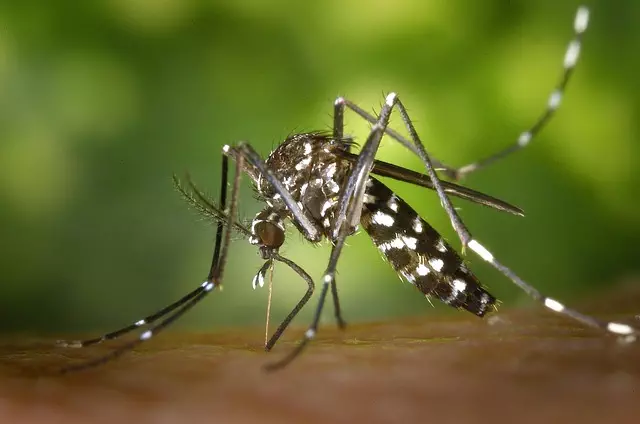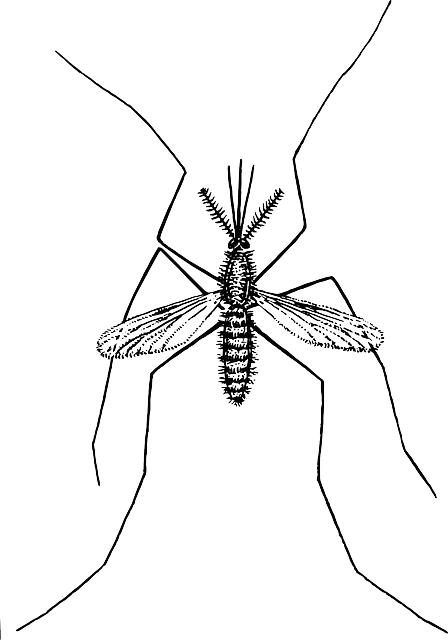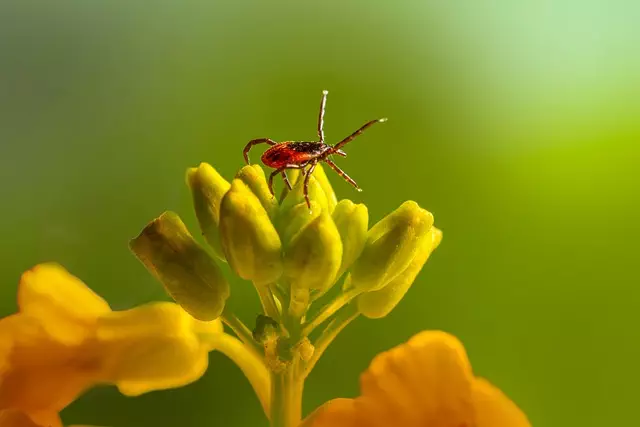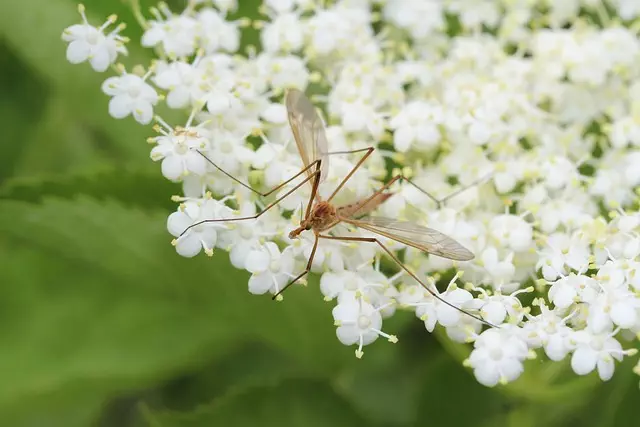Understanding mosquito and tick behavior is crucial for effective mosquito and tick control. Targeted strategies include removing stagnant water, maintaining landscaping, using nets, and treating areas with natural repellents or biopesticides. Natural repellents like citronella, lavender, basil, and marigolds provide eco-friendly solutions. DIY methods such as planting aromatic herbs, spraying essential oils, and using diatomaceous earth are cost-effective and environmentally friendly. Professional services offer precise treatments for severe infestations. Seasonal strategies involve eliminating standing water, maintaining a clean lawn, and using repellents. Preventive measures include creating physical barriers, regular cleaning, and incorporating natural repellents. Debunking myths about professional treatments and seasonal concerns encourages homeowners to take proactive steps for year-round comfort and well-being outdoors.
“Mosquitoes and ticks pose a constant threat, but effective and affordable control measures can significantly reduce their impact. Understanding these pests’ behavior is key to managing infestations. This article explores diverse strategies for mosquito and tick control, from natural repellents and aromatic plants to DIY solutions and professional services. We delve into seasonal approaches and preventive measures, separating fact from fiction and empowering readers with practical knowledge for a safer, more comfortable environment.”
Understanding Mosquito and Tick Behavior: Knowing Your Pests

Understanding the behavior of mosquitoes and ticks is a crucial step in implementing effective mosquito and tick control measures. Mosquitoes, drawn to carbon dioxide, water sources, and heat, often breed in stagnant waters and feed on nectar. They are most active during dawn and dusk, making these times prime targets for protection efforts. Ticks, on the other hand, are more active when temperatures are between 65-85°F and often climb grass or low-hanging vegetation to wait for potential hosts. Knowing their preferred habitats and behaviors allows homeowners and professionals alike to employ targeted strategies that disrupt their life cycles without resorting to harmful chemicals.
By identifying where mosquitoes and ticks congregate, rest, and reproduce, individuals can take proactive steps such as removing standing water, maintaining landscaping, using mosquito nets, and treating affected areas with natural repellents or biopesticides. Such knowledge empowers people to create a more welcoming environment for outdoor activities while minimizing exposure to these pests, thereby enhancing overall well-being and enjoying the outdoors affordably and safely.
Natural Repellents: A Green Approach to Control

Natural repellents offer an eco-friendly and effective solution for managing mosquitoes and ticks without resorting to harsh chemicals. Plants like citronella, lavender, basil, and marigolds are known for their ability to repel these pests due to their unique scents. Incorporating these plants into your outdoor spaces, such as gardens or patios, can create a natural barrier against mosquito and tick bites.
Essential oils derived from these plants are also powerful repellents when applied topically or used in diffusers. Moreover, using natural repellents promotes a healthier environment by reducing exposure to potentially harmful synthetic chemicals often found in conventional bug sprays. This green approach to mosquito and tick control is both sustainable and beneficial for various ecosystems.
Planting for Protection: Aromatic Plants as a Defense

Planting aromatic plants in your garden or outdoor space can offer a natural and cost-effective way to repel mosquitoes and ticks. These insects are known to be repelled by certain scents, so strategically placing fragrant herbs and flowers around your property can create a protective barrier. For example, citronella grass is a popular choice for its strong lemony aroma that deters mosquitoes. Rosemary, lavender, and marigolds are also effective; their scents not only keep bugs at bay but also add beauty to your garden.
By incorporating these aromatic plants into your landscape design, you can reduce the need for chemical-based mosquito and tick control methods. This approach is environmentally friendly and allows you to enjoy your outdoor areas without worrying about harsh treatments. Additionally, growing these plants locally not only saves costs but also supports a sustainable and organic lifestyle.
DIY Solutions: Simple, Effective Treatments at Home

Many homeowners prefer taking a DIY approach to mosquito and tick control, given its cost-effectiveness and potential environmental benefits. Simple remedies using common household items can significantly reduce pest populations in your yard. For instance, mixing essential oils like citronella, lavender, or peppermint with water and spraying it around your property creates a natural repellent that keeps mosquitoes at bay. Planting specific herbs like marigolds and basil not only adds beauty to your garden but also acts as natural barriers against both mosquitoes and ticks due to their strong scents.
Another effective DIY treatment involves creating a barrier using physical repellents. Spreading diatomaceous earth, a natural mineral dust, around entry points and common resting areas can disrupt the life cycles of both mosquitoes and ticks. Additionally, setting up mosquito traps using soapy water or specific attractants can help reduce the overall population in your outdoor space. These simple, affordable methods empower individuals to take control of their mosquito and tick control without relying heavily on chemical treatments.
Professional Services: When Expert Intervention is Necessary

In cases where mosquito and tick infestations are severe, persistent, or located in hard-to-reach areas, professional services might be the best course of action. Experts in mosquito and tick control employ specialized equipment and treatments that go beyond do-it-yourself methods. They understand the behavior and habitats of these pests, enabling them to target specific locations effectively.
Professionals use safe, environmentally friendly chemicals and techniques tailored to minimize impact on non-target species and ecosystems while providing lasting protection. Regular professional interventions can be crucial for maintaining a comfortable outdoor environment, especially in areas with high pest activity or for those with specific needs, like medical conditions that make exposure to these insects particularly problematic.
Seasonal Strategies: Preparedness for Peak Mosquito and Tick Activity

In preparing for peak mosquito and tick activity, seasonal strategies play a crucial role in effective mosquito and tick control. During warmer months, when these pests are most active, proactive measures can significantly reduce their presence. One key strategy involves eliminating standing water, as both mosquitoes and ticks breed in stagnant water sources. Regularly emptying containers, cleaning gutters, and filling in low spots in yards can disrupt their breeding cycles. Additionally, maintaining a well-trimmed lawn and hedges creates less habitat for ticks to hide and helps keep mosquitoes at bay.
For added protection, consider using insect repellents that contain DEET or natural alternatives like citronella. Installing mosquito nets around outdoor seating areas and sleeping quarters can also provide a physical barrier against these pests. In terms of tick control, regular inspections after being outdoors, especially in woody or grassy areas, help identify and remove attached ticks promptly. Wearing long sleeves, pants, and closed-toe shoes when hiking or gardening further reduces exposure to both mosquitoes and ticks.
Preventive Measures: Protecting Your Space Year-Round

Preventive measures play a crucial role in effective mosquito and tick control. Year-round protection involves creating physical barriers and maintaining a clean environment to deter these pests from your space. Simple actions like ensuring your yard is free of standing water—where mosquitoes breed—and trimming vegetation can significantly reduce their presence. Regularly cleaning outdoor spaces, sealing entry points in your home, and using protective netting or screens during peak activity periods further fortify defenses against both mosquitoes and ticks.
Incorporating natural repellents like citronella plants or lavender into garden design can also act as a gentle deterrent. Additionally, staying informed about local pest patterns and treatment options allows for proactive mosquito and tick control, ensuring a more comfortable and safe outdoor experience throughout the seasons.
Common Misconceptions About Mosquito and Tick Control

Many homeowners hold onto several misconceptions regarding mosquito and tick control, often due to misinformation or fears about potential chemical use. One common myth is that professional treatments are the sole effective method to eliminate these pests. However, this isn’t entirely true; there are affordable and eco-friendly strategies available for DIY enthusiasts. Natural repellents like citronella plants, lavender, and mint can be used around the house to deter mosquitoes.
Another misconception is that tick and mosquito control should only be a seasonal concern. In reality, these pests can remain active year-round, especially in warmer climates. Implementing preventive measures such as maintaining proper yard hygiene, removing standing water, and using mosquito nets or screens can significantly reduce their presence. By addressing these misconceptions, homeowners can take proactive and affordable steps towards a more comfortable and healthier outdoor environment.
